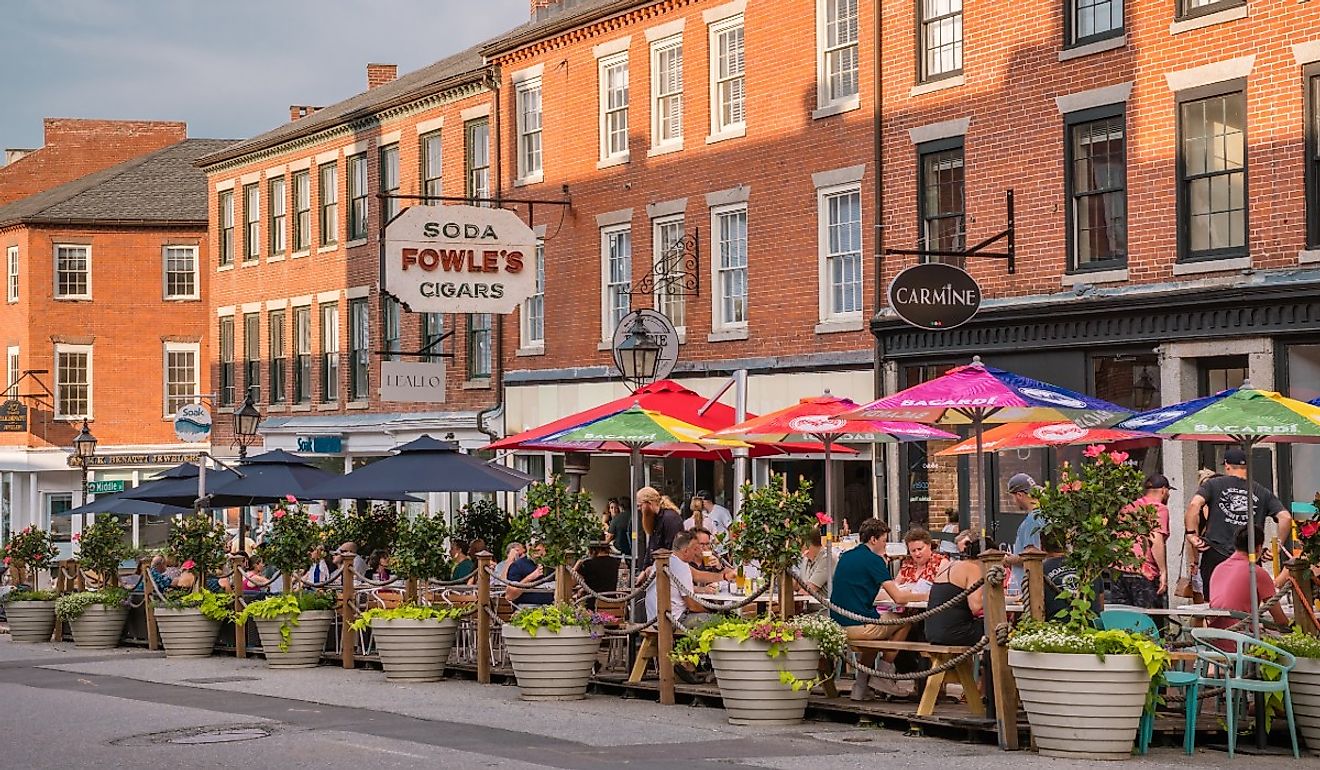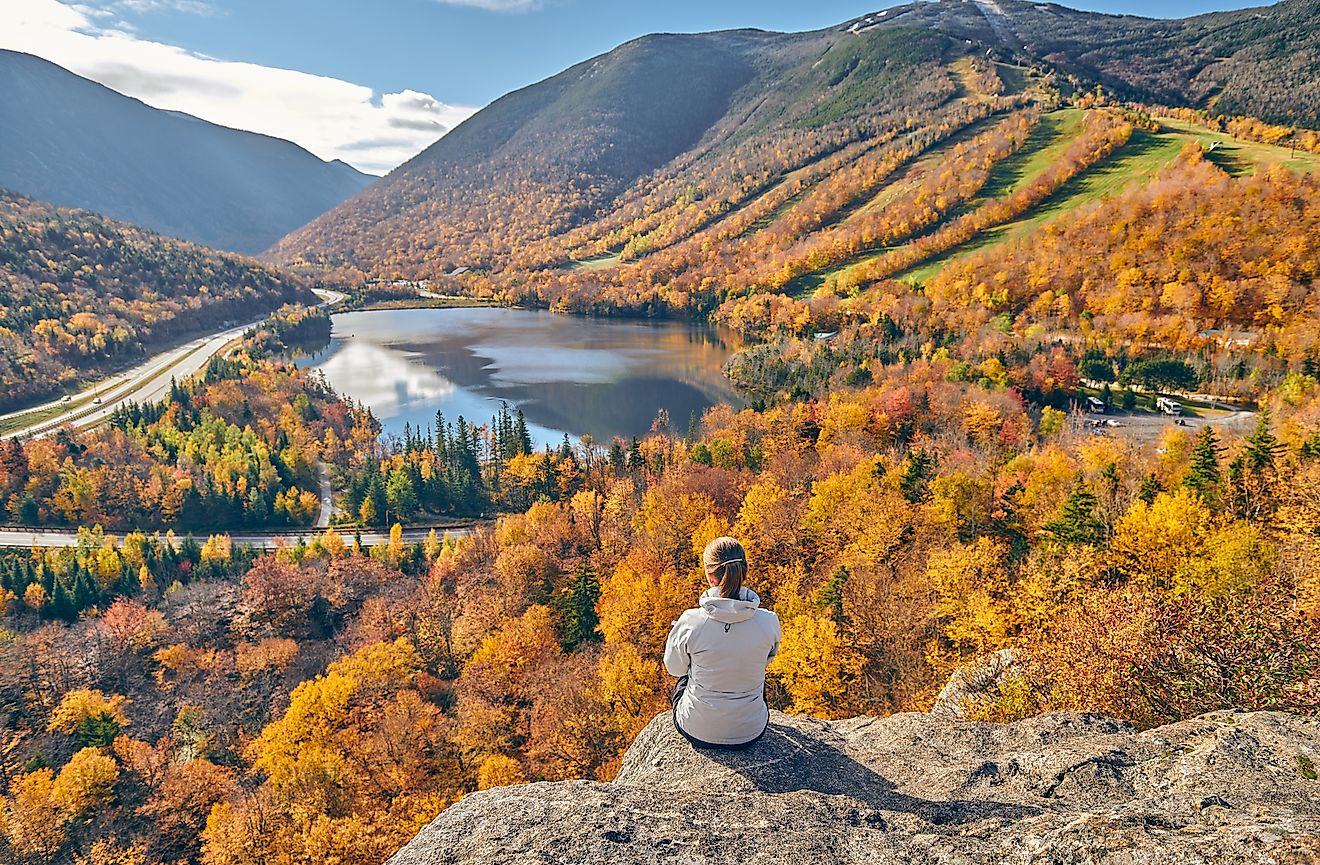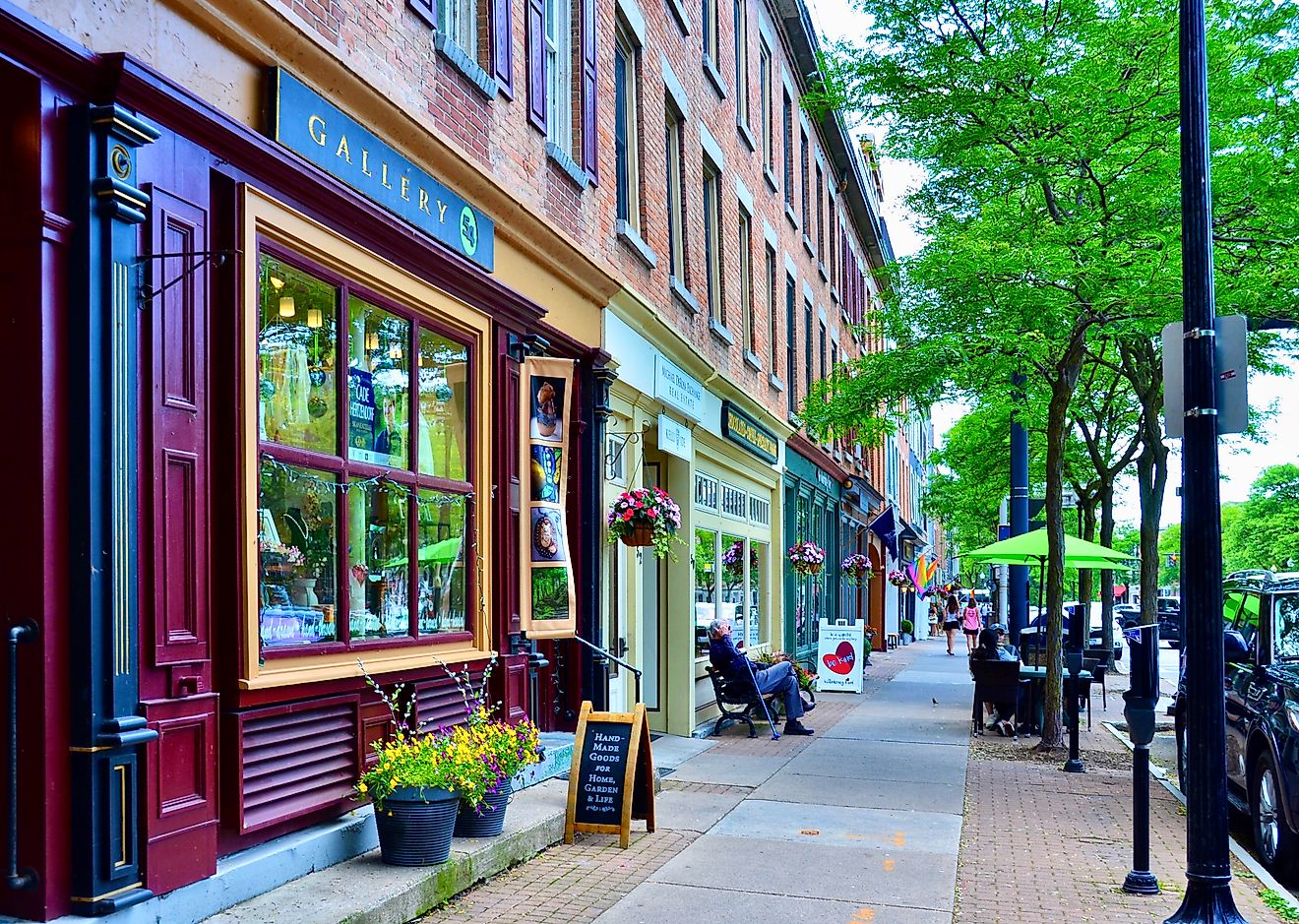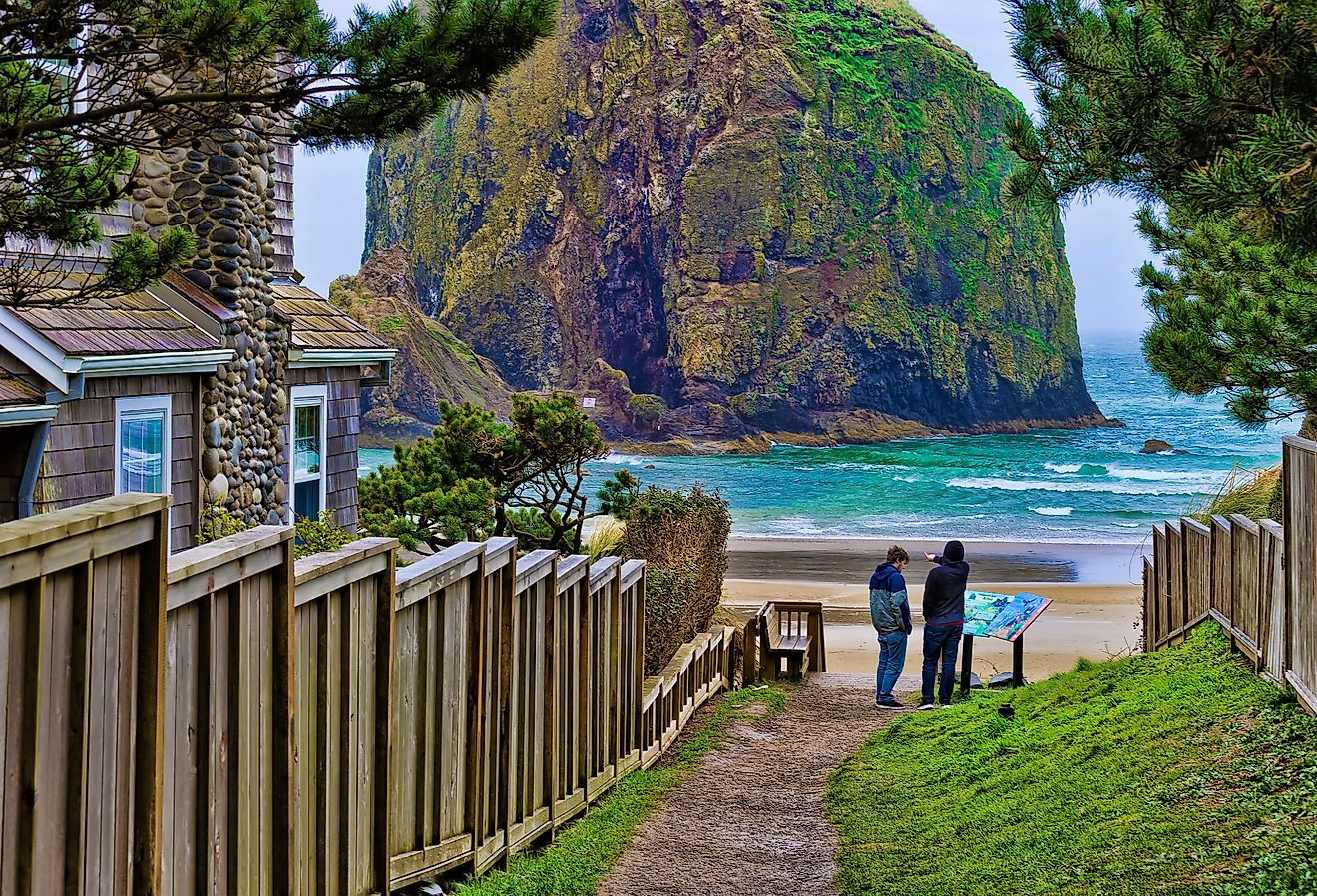
7 Off-The-Grid Gulf Coast Towns To Visit In 2025
Lost cell signal is the new welcome sign. Along the 1,600-mile sweep from Texas’s Matagorda Peninsula to Florida’s Big Bend, pockets of coast still function on shrimp-boat time, not resort check-in time. In 2025, seven such settlements offer a disappearing‐coast experience: no boardwalk arcades, no chain hotels, just tidal rhythms, working marinas, and roadside cafés that close when the nets come in empty!
In these 7 off-the-grid-towns, expect precise directions, specific eateries, and local oddities, from a tarpon rodeo older than jazz standards to a Gulf lighthouse still flashing kerosene heritage. Pack a paper map, a cooler, and a tolerance for low Wi-Fi bars; the reward is a Gulf Coast that still feels frontier!
Matagorda, Texas

Where the Colorado River empties into the Gulf of Mexico, Matagorda sits with a history that predates the Texas Revolution. Founded in 1827 as a port and trading post, it became one of Texas’s first Anglo settlements. Matagorda is known for Matagorda Cemetery, where soldiers from the Texas Revolution and early settlers are buried. The Matagorda Bay Nature Park, managed by the Lower Colorado River Authority, offers direct access to the beach, river paddling, and observation towers overlooking the marshes. At the Matagorda Birding and Nature Center, visitors can follow boardwalk trails through coastal wetlands, a prime spot for spotting migratory shorebirds.
Matagorda Outfitters rents kayaks and paddleboards for exploration along the river and East Bay. Stanley’s General Store sells local bait and supplies for fishing the Matagorda jetties and pier. Waterfront dining is available at Waterfront Restaurant and Bar, known for its fresh Gulf shrimp and oysters.
Port O'Connor, Texas
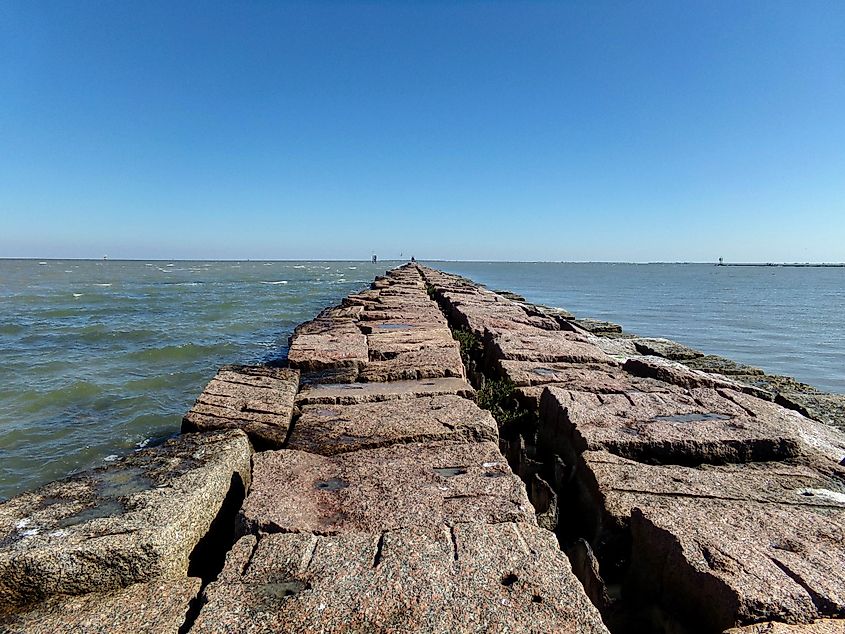
Port O’Connor emerged in the early 1900s as a shipping point for cattle and a sportfishing hub, but multiple hurricanes, including the 1919 storm and Hurricane Carla in 1961, kept it small and tightly knit. Located on Matagorda Bay, it serves as the main access point to the undeveloped Matagorda Island Wildlife Management Area, a 56,688-acre barrier island reachable only by boat. Fishing defines the town’s culture, with redfish, speckled trout, and flounder drawing anglers year-round. The King Fisher Beach Park offers a jetty, public pier, and playground, and the Port O’Connor Community Center hosts events and festivals.
Froggie's Bait Dock rents boats and sells bait for trips into Espiritu Santo Bay. Cathy’s Restaurant serves fried shrimp and oysters sourced from local waters. Sharkies Bar and Grill is a gathering spot for locals and visitors after long fishing days. The Fishing Center marina operates charter boats and organizes tournaments. The nearby Boggy Bayou is known for kayaking, and the coastal flats around Pass Cavallo offer world-class birdwatching.
Bayou La Batre, Alabama
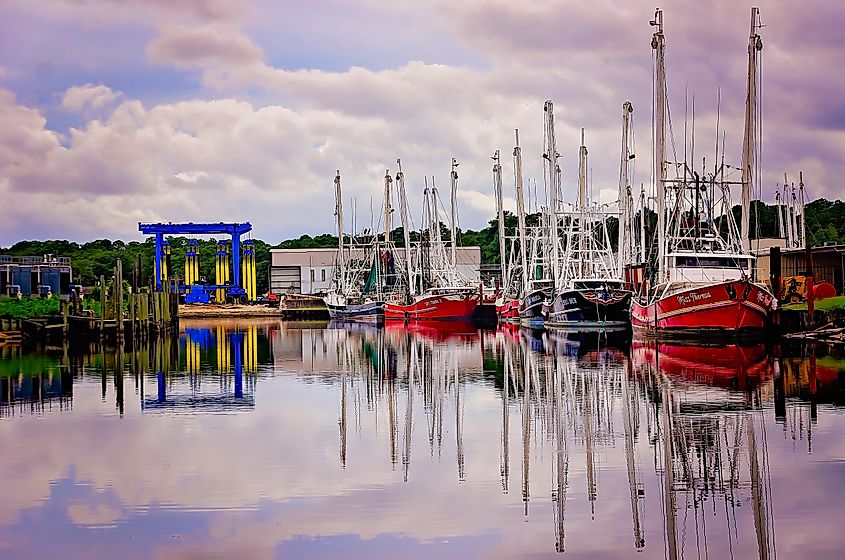
Bayou La Batre is known as the state’s “Seafood Capital” and has been a working fishing village since the 1800s. Its shipyards built the replica shrimp boats used in Forrest Gump, and the town has a strong Vietnamese-American community that has reshaped its seafood industry. Located along Portersville Bay, Bayou La Batre supplies Gulf shrimp, oysters, and crab to markets across the country. The Bayou La Batre City Docks are active with shrimp trawlers and oyster boats, offering visitors a direct view into the commercial fishing world.
The Bayou La Batre Community Center holds local events and cultural gatherings. Catalina Seafood Restaurant is known for gumbo and fried crab claws, while Lai Lai Asian Cuisine serves Vietnamese pho and seafood dishes reflecting the town’s immigrant influence. Lightning Point Park offers access to the bay for birdwatching and kayaking. The St. Margaret Catholic Church, founded in 1910, stands as a historical landmark.
Dauphin Island, Alabama
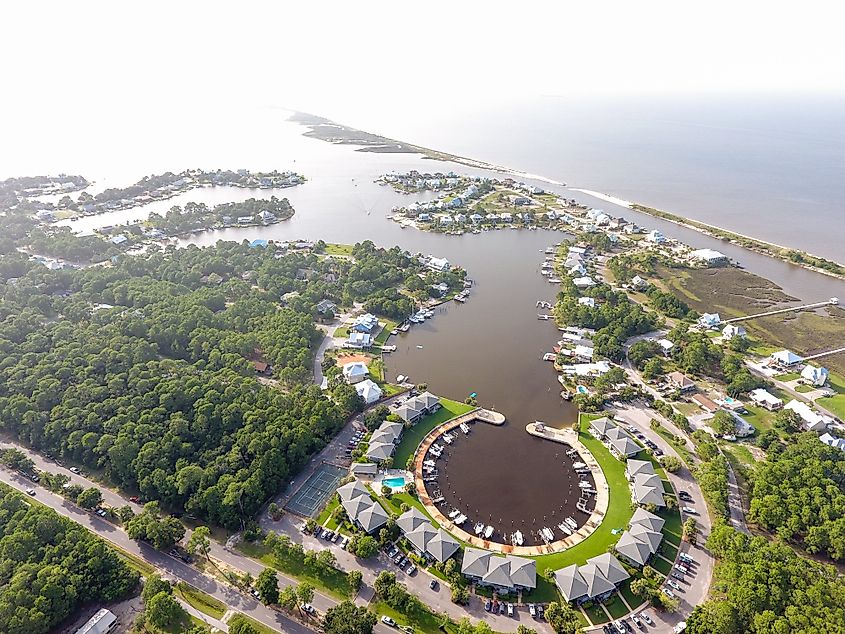
Dauphin Island sits at the mouth of Mobile Bay and is known as the first capital of French Louisiana, founded in 1699. It holds Fort Gaines, a brick fortress built in 1821 that played a role in the Battle of Mobile Bay during the Civil War. The Dauphin Island Audubon Bird Sanctuary attracts migratory birds along the Mississippi Flyway and includes a three-mile trail system through maritime forest, swamp, and beach. The Estuarium at the Dauphin Island Sea Lab provides exhibits on Gulf Coast marine life, including touch tanks and a living marsh boardwalk.
Dauphin Island Public Beach offers access to sand and surf near the pier. Pirate’s Bar and Grill serves Gulf shrimp and oysters overlooking the marina. Lighthouse Bakery is known for cinnamon rolls and pastries. Billy Goat Hole Marina is the departure point for the Mobile Bay Ferry and for local fishing charters. The Dauphin Island Heritage and Arts Council Gallery showcases regional art and offers workshops. Indian Shell Mound Park preserves the remains of Native American shell mounds dating back over 1,000 years.
Waveland, Mississippi
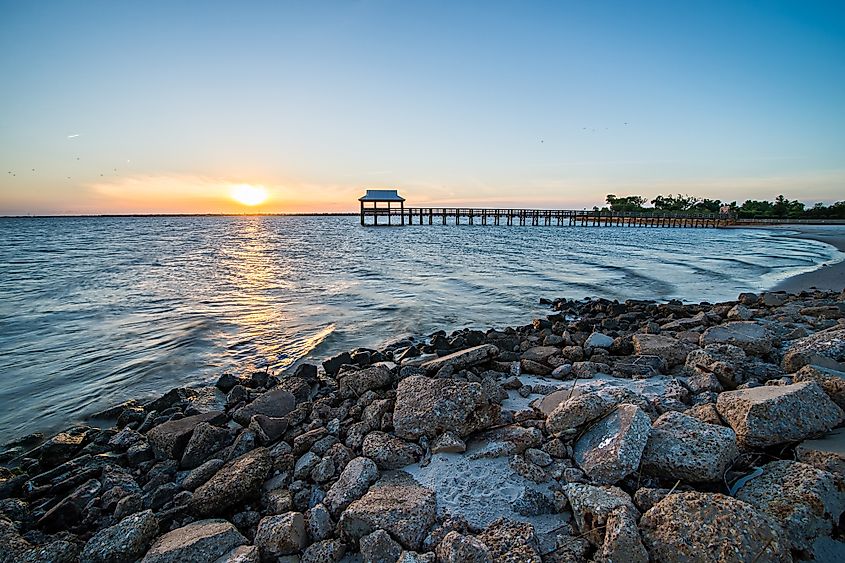
Waveland is the only Gulf Coast town that bans commercial buildings along its beachfront, preserving an uninterrupted public coastline. Nearly destroyed by Hurricane Katrina in 2005, Waveland has rebuilt with a focus on resilience and community spaces. The Ground Zero Hurricane Museum documents the town’s recovery with exhibits on local history and survivor accounts. Buccaneer State Park covers 400 acres with a wave pool, nature trails, and camping sites along the Gulf.
The Studio Waveland + Gallery showcases contemporary art from Gulf Coast artists and holds public events. Rum Kitchen serves Caribbean-inspired dishes like jerk chicken and fried plantains. Veterans Memorial Park, near the beach, contains monuments and green space for walking. The Bay-Waveland Yacht Club, founded in 1896, organizes sailing races and events on the bay.
Grand Isle, Louisiana
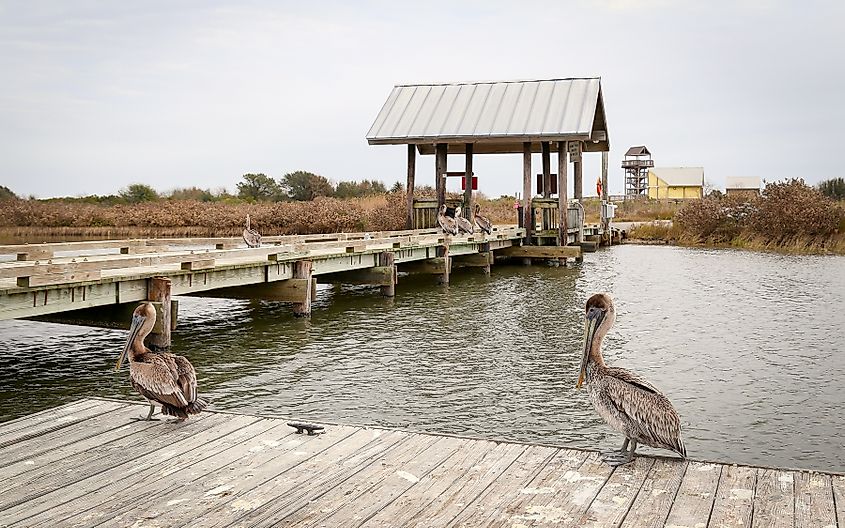
Grand Isle is the state’s only inhabited barrier island and has been a center of commercial and recreational fishing since the 1700s. It hosts the Grand Isle Tarpon Rodeo, the oldest fishing tournament in the U.S., first held in 1928. Located at the edge of Barataria Bay, Grand Isle marks the end of Highway 1, with only one road on and off the island. Grand Isle State Park offers camping, surf-fishing, and a long fishing pier reaching into the Gulf. The Nature Conservancy’s Lafitte Woods Preserve protects maritime forest habitat critical for migratory songbirds.
Yum’s Restaurant serves boiled crawfish, shrimp platters, and po’boys. Starfish Restaurant prepares Gulf fish and local oysters. Bridgeside Marina rents boats and supplies bait for fishing trips into the bay or offshore. The Grand Isle Community Center hosts local events and meetings. Calmwater Charters offers guided inshore fishing trips targeting redfish and speckled trout. The Butterfly Dome at the Grand Isle Multiplex contains native butterfly species and coastal plants.
St. Marks, Florida
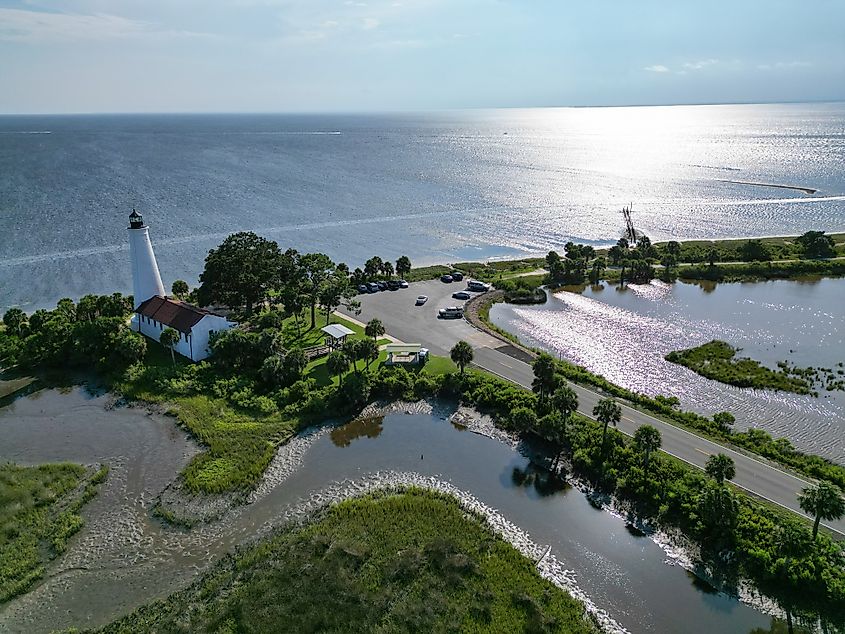
St. Marks is one of the oldest settlements on the Gulf Coast, established by the Spanish in the 17th century as a military outpost. The historic San Marcos de Apalache Historic State Park preserves the ruins of a Spanish fort and offers a small museum detailing colonial, Civil War, and Seminole War history. The St. Marks National Wildlife Refuge spans 68,000 acres and includes the St. Marks Lighthouse, built in 1842, which is one of the oldest lighthouses on the Gulf and a key spot for migratory birdwatching and wintering monarch butterflies.
Riverside Café serves mullet, soft-shell crab, and smoked fish dip on the banks of the St. Marks River. St. Marks Outfitters rents kayaks and organizes guided paddling trips along the river and coastal marshes. Shell Island Fish Camp provides boat slips, cabins, and supplies for fishing excursions. The Tallahassee-St. Marks Historic Railroad State Trail ends in the town, offering a 16-mile paved bike route from Tallahassee.
On this hurricane-etched shoreline, quiet towns still measure days by tides and trawler horns, not notifications. Follow shrimp boats into pastel dawns, trade interstate speed for ferry wake, and you’ll discover museums housed in fort ruins, lighthouses still sweeping kerosene halos, and cafés closing when the catch is light. Bring binoculars, your grandmother’s road atlas, and a cooler; leave with salt-crusted stories only the Gulf’s last frontier can season properly.
